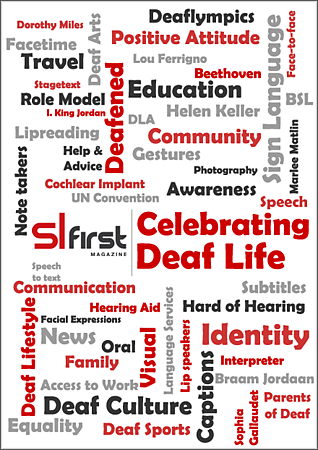Gadgets12th October 2013
Technology - Leap Motion Sensor
The new Leap Motion Sensor might open up new opportunities for BSL users.
 For this edition, I thought I would take a brief look at a brand new product that has just launched (even though I placed my order for this product almost a year ago!) The product I am talking about is a small device that attaches to your computer (PC / Mac) called a Leap Motion. The Leap Motion offers an entirely new way of interacting with your computer; it’s a 3D motion control device and the people who made it hope that it’s going to change the way people control their laptops and desktop computers.
For this edition, I thought I would take a brief look at a brand new product that has just launched (even though I placed my order for this product almost a year ago!) The product I am talking about is a small device that attaches to your computer (PC / Mac) called a Leap Motion. The Leap Motion offers an entirely new way of interacting with your computer; it’s a 3D motion control device and the people who made it hope that it’s going to change the way people control their laptops and desktop computers.
 If you’ve ever used the Kinect system with an Xbox games console, you will know that system is able to detect body shapes and movements made by people playing games in their living rooms. The Leap Motion is different because it is 200 times more sensitive to movement than other available technologies. This means it can follow the movement of a pen or finger moving as little as one hundredth of a millimetre. It doesn’t stop there either, not only can it track one finger with that accuracy, it can track all 10 of them.
If you’ve ever used the Kinect system with an Xbox games console, you will know that system is able to detect body shapes and movements made by people playing games in their living rooms. The Leap Motion is different because it is 200 times more sensitive to movement than other available technologies. This means it can follow the movement of a pen or finger moving as little as one hundredth of a millimetre. It doesn’t stop there either, not only can it track one finger with that accuracy, it can track all 10 of them.
If you would like to see a demonstration of the Leap Motion in action, you can use the following link or scan this code with your mobile phone. http://youtu.be/3b4w749Tud8

There are videos on the internet of developers using the Leap Motion to control games, play virtual musical instruments, and navigate maps, but reading about this got me thinking. If it can track all 10 fingers and they say it will bring a more natural interaction with your computer, then what is more natural than using real natural (signed) language to interact with it. Now, just to be clear – I know that a large portion of BSL isn’t produced on the hands, but this system could surely allow for some basic interaction with computer systems. Imagine being able to sit in front of your computer, do the sign for ‘Internet’ and your web browser opens, or sign ‘email’ and your email application pops up.
This sort of interaction could make using computers much easier for sign language users without much experience of using computers. It is likely to make computer interaction easier than for hearing (non-signing) people too. People naturally use gestures when communicating, so this seems like a great use of them.

After some quick research online, it seems that other people have thought about this too and in this video clip: (http://youtu.be/JrKltv6TObw) you can see some American students using ASL (American Sign Language) fingerspelling to input text to a computer. Leap have even setup a forum dedicated to discussions around using the Leap Motion controller with signed languages, you can read more about that by following this link: http://is.gd/LeapSign, although there’s not been much discussion yet!
While writing this, I have had my Leap controller for just under a week, and my experience has been varied. Sometimes it seems to work brilliantly, and detects every tiny movement of my hands, but other times my cursor jumps all over the screen. Being such a new product, at this stage it is hard to tell whether this is due to my surroundings (e.g. it doesn’t like bright lights near it) or just me being rubbish at using it!
The Leap Motion comes with its own app store called Airspace. At this app store you’ll find a range of downloadable apps for Windows and Mac (no Linux support yet, but it is coming). So far, I’ve used it to play Cut the Rope and a few other games, flown around the globe in Google Earth (which is a lot of fun) and did a terrible drawing with Corel Painter.
Initially, you really do feel a bit like you’re in the Minority Report movie, moving things around the screen with a swoosh of your hand, but after trying several apps I’m just not convinced it’s quite ready for full blown sign language yet.
In that respect it is similar to Speech-to-Text computer software, which works okay but not brilliantly. This works fine, but now I have to wait for the amazing software to come along and allow me to use BSL to talk to my PC!
If you would like to buy your own Leap Motion controller, it’s available to purchase online for £7
Article by Karl Jenkins
posted in Technology / Gadgets
12th October 2013





